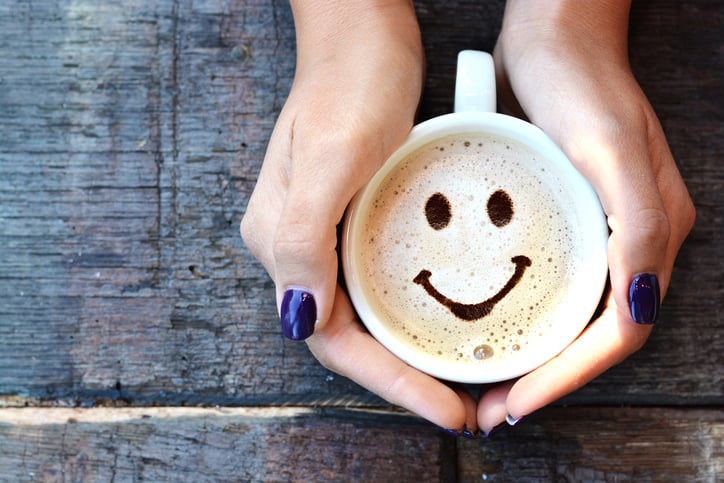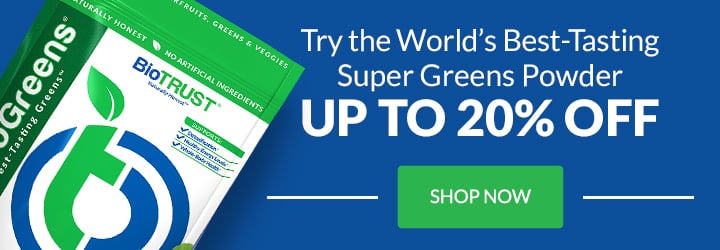6 Best Drinks For Your Body (What’s In Your Cup?)

“What’s in your cup?” No really, I would love to hear what is in your cup? I’ll go first. It depends. What am I in the mood for? What time of day is it? What is the weather like? How much time do I have to prepare my beverage?
Choosing what to drink is just as important as choosing what to eat. So often we consume empty calories without even giving it a second thought. We are careful to plan out each macro and count calories when it comes to the food portion of our meal plan, but we overlook the liquid portion. That’s why I have put together my list of the 6 best drinks for your body and health. Bottoms up!
Coach Cristina’s 6 Best Drinks For Your Body
1. Water
Generally speaking, you can always find a cup of water in my hand or within very close proximity. I am always staying hydrated with water, and I probably exceed the recommended amount on most days. But water is the #1 on the list of best drinks for your body.
I have noticed that water/fluid intake recommendations tend to be all over the map. The standard recommendation is to drink 8 glasses of water (i.e., 64 ounces) per day, but requirements can vary significantly based on body size, activity level, sweat rates, climate, etc.
With coaching clients, I suggest consuming as much as 1 liter per 50 pounds of bodyweight. For example, a 150-pound individual would consume 3 liters (i.e., about 96 ounces) per day. Alternatively, I also recommend dividing your bodyweight by two and drinking that amount of water in ounces per day. In the 150-pound example, this would equate to 75 ounces per day.
With the growing popularity of sparking waters and flavor-enhanced waters, there are so many great options available for those who are not huge fans of plain ol’ H2O. The trick here is to be very mindful of hidden sugars in these flavor-enhanced water beverages. These can quickly turn your healthy drink into something more comparable to a soda.
Using water as my building block, I can also create a healthy protein shake, a delicious greens drink, cold/hot tea, coffee, or even kombucha.
2. Protein Shake
I usually replace one meal per day with a BioTrust Nutrition protein shake. It really doesn’t get easier than tossing 2 scoops of protein powder into a shaker bottle with 8 ounces of water.
One of the reasons I feel confident in filling my cup, and even my children’s cups, with a protein shake made by BioTrust Nutrition is that the protein comes from grass-fed cows, and it’s made with natural ingredients. No matter which blend you use, you are guaranteed no artificial colors, flavors, or preservatives, and they are all soy- and GMO-free. A shake with BioTrust protein truly is one of the best drinks for your body.
There are also so many flavors to choose from that I can satisfy my cravings for pretty much any combination from fruity to chocolate to simple vanilla.
When creating a healthy shake, you really can’t go wrong with using the following template as your guide:
- Protein: 2 scoops BioTrust Protein Blend
- Vegetable: 1 – 2 fistfuls (e.g., spinach, powdered greens)
- Fruit: 1/2 – 1 cupped handful (e.g., berries)
- Healthy Fats: 1 thumb-sized portion (e.g., nuts, nut butters, seeds, coconut oil)
- Low-calorie liquid: 8 ounces (e.g., water, unsweetened almond milk)
- Ice: to preference
The key here is to be mindful of making it too much of a good thing. What I mean by that is throwing in too many handfuls of fruits that are higher on the glycemic index than others and not balancing it out with leafy greens.
The liquid you use to mix your protein shake with can make or break this as a healthy option as well. Watch out for certain types of milk and fruit juices as your liquid as these can quickly add on extra, unnecessary calories.
3. Greens Drink
Another BioTrust product that fills my cup is MetaboGreens 45X. This is an energizing blend of 45 nutrient-rich raw greens, vegetables, super fruits, exotic herbs, berries, and spices all packed into the world’s most delicious superfood blend (IMHO).
If you have ever tried to choke down greens products from other companies, oftentimes it is difficult unless you have one hand plugging your nose. Trust me, I have tried them all, and MetaboGreens 45X is one I fully endorse.
I used to seek out ways to ensure my children get the required fruits and veggies each day, but with the release of this product, my prayers were answered. My kids can even make their own greens drink by tossing 1 scoop of MetaboGreens 45X into a shaker bottle with 6 ounces of water. It tastes like fruit punch, but it is made with organic ingredients, it’s non-GMO, soy-free, dairy-free, and gluten-free, and it contains NO artificial sweeteners, flavors, or colors.
This one is truly kid tested, mom approved (and definitely on my best drinks for your body list).
4. Cold/Hot Tea
When it comes to tea, you really can’t go wrong with serving it hot or cold. Boil some water and add your choice of tea bag, and voila! If you have a sensitivity to caffeine, you may want to opt for a decaffeinated blend, but generally speaking, tea is divided into 6 types:
- White: wilted and unoxidized
- Yellow: unwilted and unoxidized but allowed to yellow
- Green: unwilted and unoxidized
- Oolong: wilted, bruised, and partially oxidized
- Black: wilted, sometimes crushed, and fully oxidized
- Post-fermented: green tea that has been allowed to ferment/compost
For those of you who are wondering where herbal teas fit into this best drinks for your body list, you may be surprised to learn that while these are also referred to as tea, most of them do not contain leaves from the tea plant. Herbal teas are actually made from Camellia sinensis. This is an infusion of fruit, leaves, or other parts of the plant, such as steeps of rosehip, chamomile, or rooibos.
Now being that I live in the south, we don’t often get the option to drink our tea unsweetened. The health benefits of tea are pretty much thrown out the window when you get into sweetened tea, especially when the ratio of water/tea to sugar is off the charts. It is critical to be mindful of not only the source of your tea leaves, but also the additives that many include in their brews.
5. Coffee
Much like tea, all that is required for a good cup of coffee is boiled water and some quality coffee beans. Coffee used to only be served hot, and the only people who drank cold coffee were folks who let their warm coffee sit out too long. (That’s usually the case with me—I get so busy, I wonder what hot coffee tastes like!) These days you can find just as many chilled coffee drinks as hot coffee drinks, and they can vary on any of the following factors:
- Bean variety
- Processing method
- Geographic origin
- Roast
- Brewing method
Although there are around 126 documented different types of coffee trees/plants (crazy, huh?), there are only three that are typically available commercially:
- Coffea arabica (Arabica). This species makes up about 70% of the world market for coffee beans. This is a fancy grade coffee bean sold mostly through specialty coffee shops.
- Coffea canephora (Robusta). Making up about 27% of the world coffee bean market, this is a high-caffeine-content species, which is often sold for use in instant coffee.
- Coffea liberica Bull (Liberian). This species, grown in Malaysia, Liberia, and the Ivory Coast, makes up about 3% of the world coffee bean market. This type is also called “Coffea arnoldiana De Wild,” but it’s most commonly called “Liberian coffee.”
Much like tea, sometimes people can overdo the additives in coffee. A lot. When you get into creamers, sugars, and trendy coffee shop blends, you can exceed your daily calorie limit relatively quickly before ever making it into work.
There are so many healthy options for spicing up your coffee that you don’t need to bust your gut with the expensive coffee chain options. And with these, you won’t have to learn a second language just to order them.
Try adding cinnamon to your brew—this is a super healthful option, and it won’t break your diet or the bank. If you are following a ketogenic diet, you may have jumped on the bulletproof coffee bandwagon.
6. Kombucha
People have been drinking fermented tea for thousands of years, mostly because it is a refreshing beverage, but also for its probiotic benefits.
To make kombucha, sweet tea is fermented with a starter culture to create a tangy beverage. The starter culture is a “symbiotic colony of bacteria and yeast” or SCOBY. It’s often called a “mushroom” because that’s what it looks like as it’s growing.
So, what makes kombucha land firmly on the best drinks for your body list? Kombucha contains phytochemicals or phytonutrients that may have antimicrobial and antioxidant properties. Studies have shown that these antioxidants may help support healthy liver and kidney function and even support the body’s healthy response to diabetic complications. What’s more, kombucha is also a rich source of both B-vitamins and folic acid.
Since this is quite a process and can take up to a week to complete a batch of kombucha, you need to exercise some patience to enjoy your kombucha. Additionally, when you’re fermenting a live organism like bacteria or yeast at home, food safety is also an issue.
Coach Cristina’s 6 Best Drinks for Your Body: A Recap
So, there you have it. These are the 6 best drinks for your health (that you will typically find in MY cup). These are my top choices for fluids that will not only keep you hydrated but provide health benefits as well. The things you will not find in my cup are sodas, detox drinks, and non-organic wine.
Soooo…what’s in your cup?







